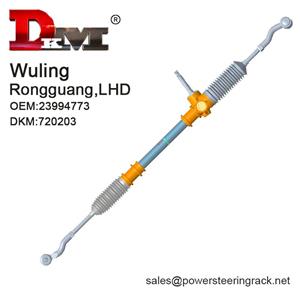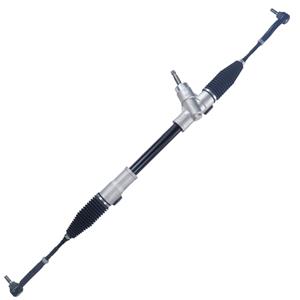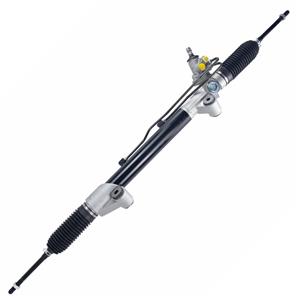-
The design of the rack and pinion steering system is relatively simple, uses fewer components, and is small in size. For small vehicles such as karts, the compact design of the rack and pinion steering system can save space and avoid overly complex mechanical devices.
-
Although rack-and-pinion steering systems can be used together with tilt mechanisms in theory, in practice, there are still certain design challenges. The most important point is how to ensure that the steering system's accuracy and response speed are not affected when the steering wheel angle is adjusted.
-
Small cars and compact cars are the most common types of vehicles that use rack and pinion steering systems. These vehicles are usually used for urban commuting and are designed to provide smooth handling and low manufacturing costs. ·Representative models: Honda Civic, Toyota Corolla, Volkswagen Golf, etc.
-
If the driver is used to more intense driving, he may tend to choose a design with more sensitive steering. At this time, it is more appropriate to choose a gear with more teeth. For vehicles driven in daily cities, drivers may prefer easier and more comfortable steering. Appropriately reducing the number of teeth may bring a better driving experience.
-
The rack and pinion steering system can provide high accuracy and stable controllability due to its precise gear meshing design. For four-wheeled motorcycles, this high-precision steering system can ensure that the driver can still maintain a good control experience in off-road or complex road conditions.
-
0905-2025
Do F1 cars use rack and pinion steering?
Given the strict requirements of F1 cars for the steering system, the application of traditional rack and pinion steering systems in F1 cars is not entirely applicable. However, the steering system of F1 cars can still be regarded as a high-performance variant of the rack and pinion system.
-
Bent or damaged rack and pinion steering will cause it to no longer cooperate accurately with other components. At this time, the steering system will become heavy or slow to respond, and the driver will need to exert more force to turn the steering wheel.
-
Single Lever Steering Systems The earliest automotive steering systems were very simple, usually using a single lever to control the direction. This design is similar to the steering principle of a ship's rudder or a horse-drawn carriage, which achieves the steering of the vehicle by changing the angle of the front wheels.
-
Although rack and pinion steering systems are very popular in ordinary road vehicles, their application in NASCAR cars is relatively limited. NASCAR cars generally do not use rack and pinion steering systems, but continue to rely on recirculating ball steering systems.
-
Positive locking means that in a rack and pinion steering system, a specially designed locking device is used to automatically lock or limit the steering angle under certain conditions to prevent the vehicle from oversteering or steering out of control.




